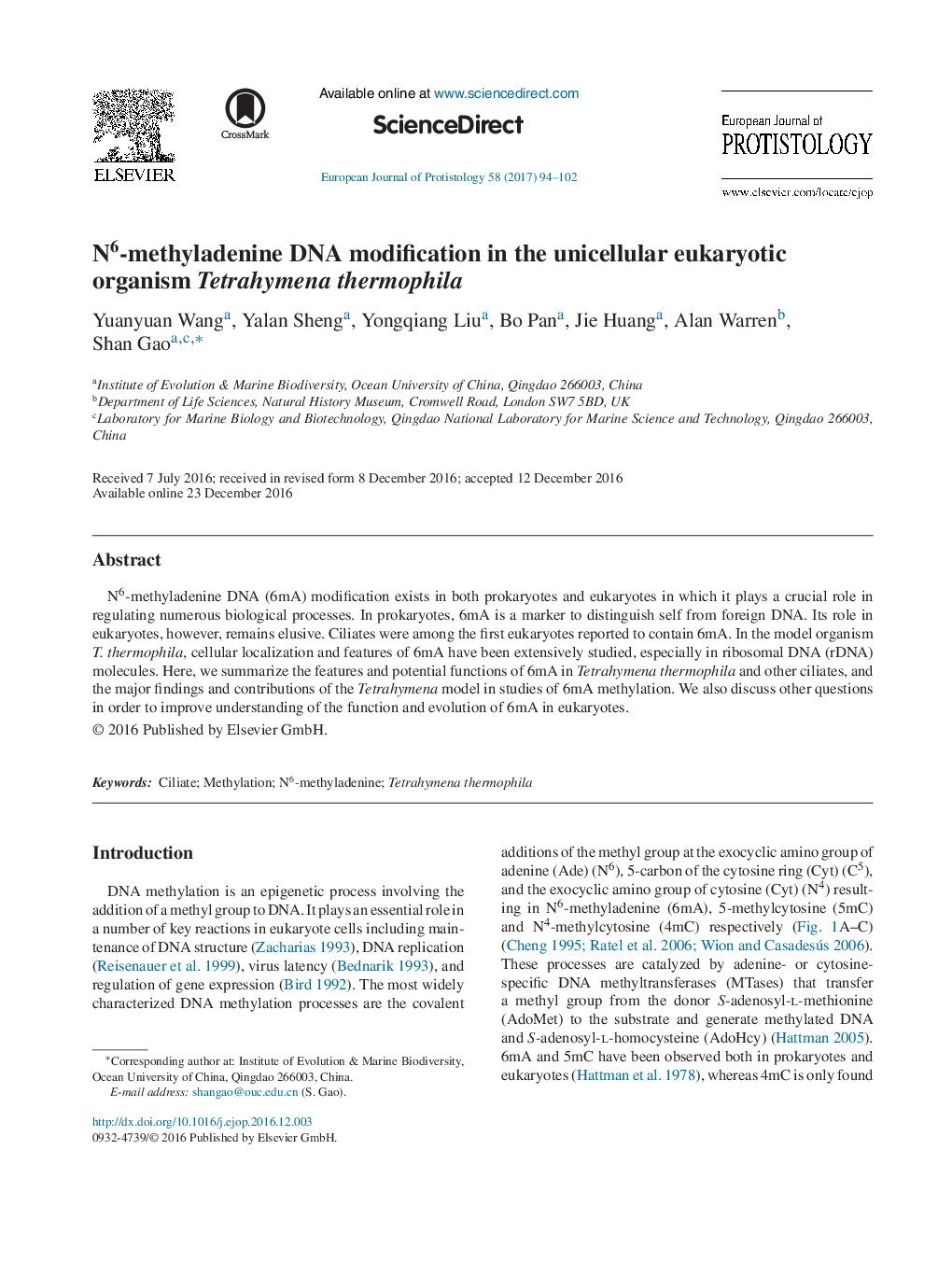| Article ID | Journal | Published Year | Pages | File Type |
|---|---|---|---|---|
| 5517561 | European Journal of Protistology | 2017 | 9 Pages |
N6-methyladenine DNA (6mA) modification exists in both prokaryotes and eukaryotes in which it plays a crucial role in regulating numerous biological processes. In prokaryotes, 6mA is a marker to distinguish self from foreign DNA. Its role in eukaryotes, however, remains elusive. Ciliates were among the first eukaryotes reported to contain 6mA. In the model organism T. thermophila, cellular localization and features of 6mA have been extensively studied, especially in ribosomal DNA (rDNA) molecules. Here, we summarize the features and potential functions of 6mA in Tetrahymena thermophila and other ciliates, and the major findings and contributions of the Tetrahymena model in studies of 6mA methylation. We also discuss other questions in order to improve understanding of the function and evolution of 6mA in eukaryotes.
